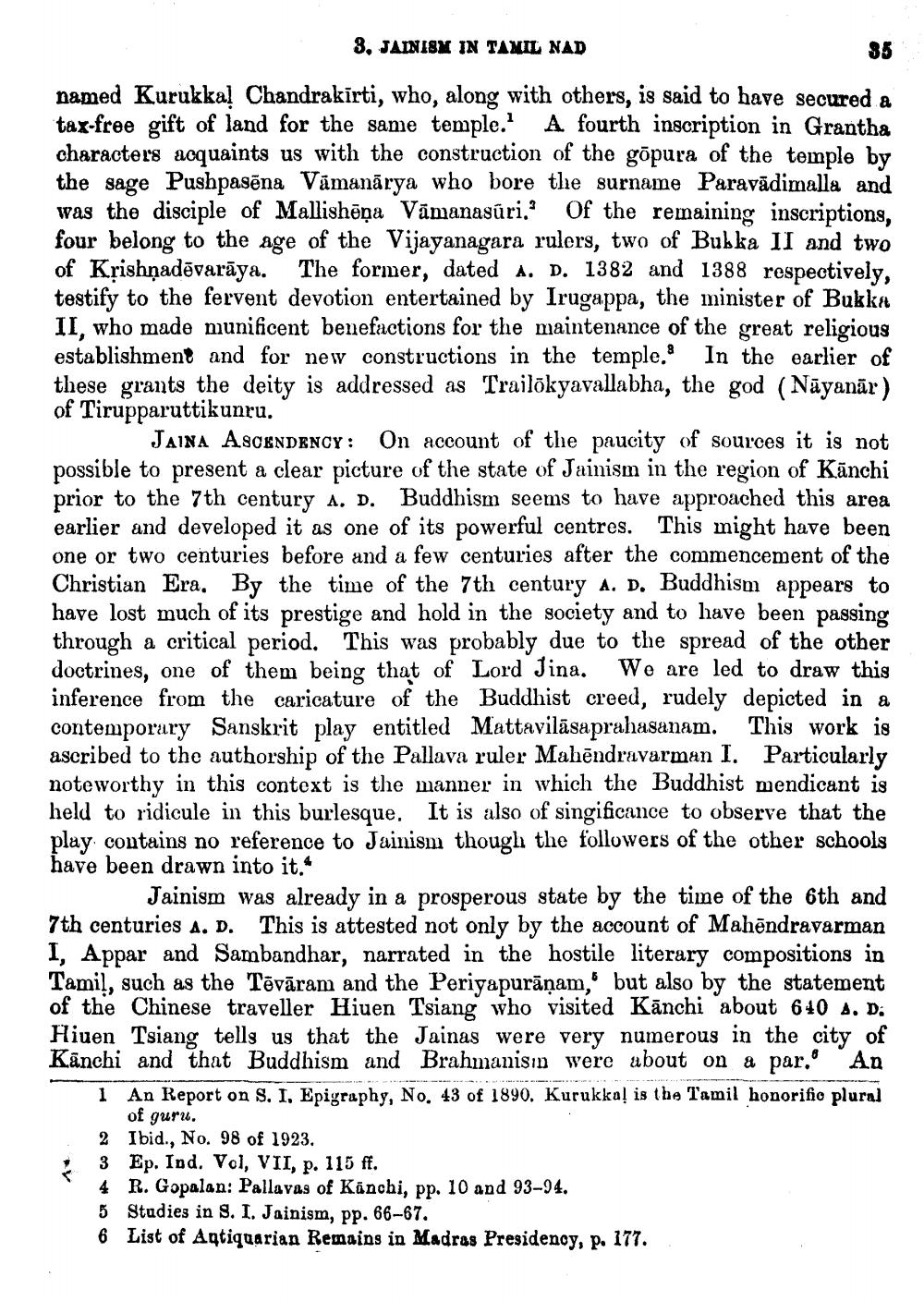________________
3. JAINISM IN TAMIL NAD
35 named Kurukka! Chandrakīrti, who, along with others, is said to have secured a tax-free gift of land for the same temple. A fourth inscription in Grantha character's acquaints us with the construction of the gõpura of the temple by the sage Pushpasēna Vāmanārya who bore the surname Paravādimalla and was the disciple of Mallishāņa Vāmanasűri.' Of the remaining inscriptions, four belong to the age of the Vijayanagara rulers, two of Bubka II and two of Krishṇadāvarāya. The former, dated A. D. 1382 and 1388 respectively, testify to the fervent devotion entertained by Irugappa, the minister of Bukka II, who made munificent benefactions for the maintenance of the great religious establishment and for new constructions in the temple. In the earlier of these grants the deity is addressed as Trailokyavallabha, the god (Nāyanār) of Tirupparuttikunru.
Jaina ASCENDENCY: On account of the paucity of sources it is not possible to present a clear picture of the state of Jainism in the region of Kānchi prior to the 7th century A. D. Buddhism seems to have approached this area earlier and developed it as one of its powerful centres. This might have been one or two centuries before and a few centuries after the commencement of the Christian Era. By the time of the 7th century A. D. Buddhism appears to have lost much of its prestige and hold in the society and to have been passing through a critical period. This was probably due to the spread of the other doctrines, one of them being that of Lord Jina. We are led to draw this inference from the caricature of the Buddhist creed, rudely depicted in a contemporary Sanskrit play entitled Mattavilāsaprahasanam. This work is ascribed to the authorship of the Pallava ruler Mahendravarman I. Particularly noteworthy in this context is the manner in which the Buddhist mendicant is held to ridicule in this burlesque. It is also of singificance to observe that the play contains no reference to Jainism though the followers of the other schools have been drawn into it."
Jainism was already in a prosperous state by the time of the 6th and 7th centuries a. D. This is attested not only by the account of Mahēndravarman I, Appar and Sambandhar, narrated in the hostile literary compositions in Tamil, such as the Tēvāram and the Periyapurāṇam, but also by the statement of the Chinese traveller Hiuen Tsiang who visited Kānchi about 640 A. D. Hiuen Tsiang tells us that the Jainas were very numerous in the city of Kānchi and that Buddhism and Brahmanisın were about on a par.' An
1 An Report on S. I, Epigraphy, No. 43 of 1890. Kurukka! is the Tamil honorifio plural
of guru. 2 Ibid., No. 98 of 1923. 3 Ep. Ind. VoI, VII, p. 115 ff. 4 R. Gopalan: Pallavas of Kanchi, pp. 10 and 93-94. 5 Studies in S. I. Jainism, pp. 66-67. 6 List of Antiquarian Remains in Madras Presidency, p. 177.
V




